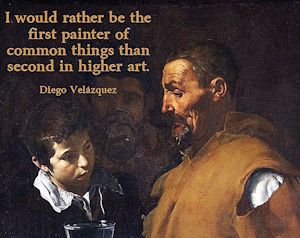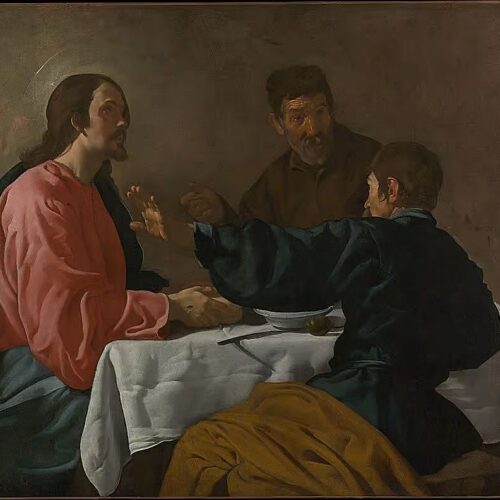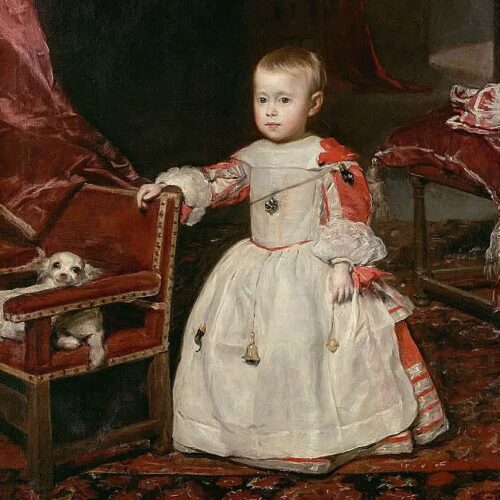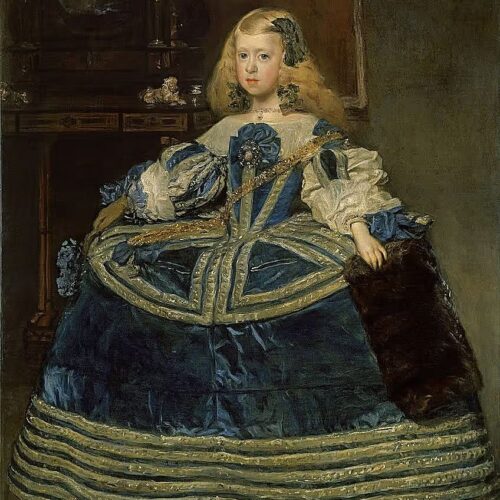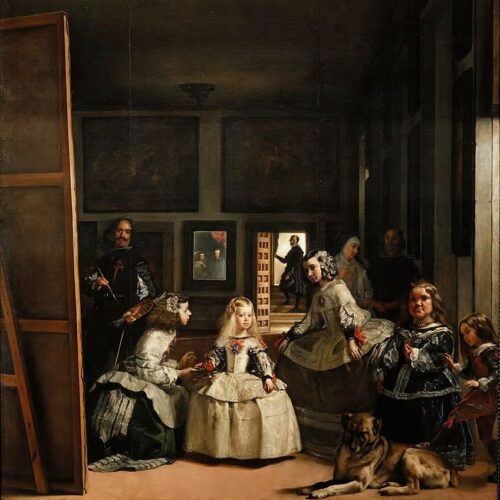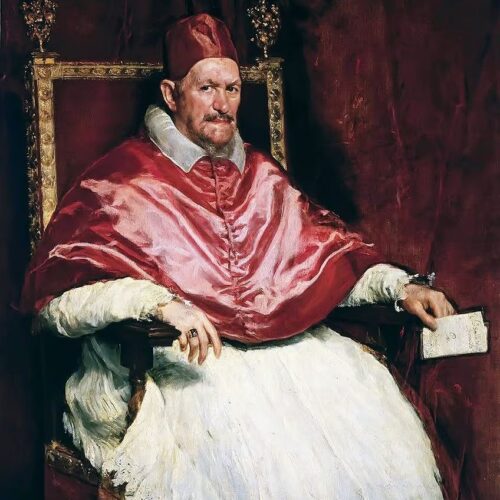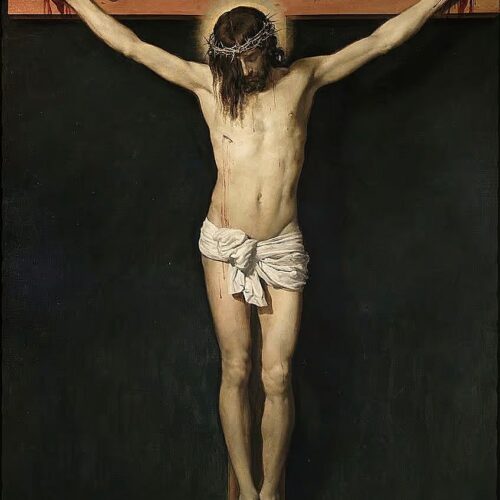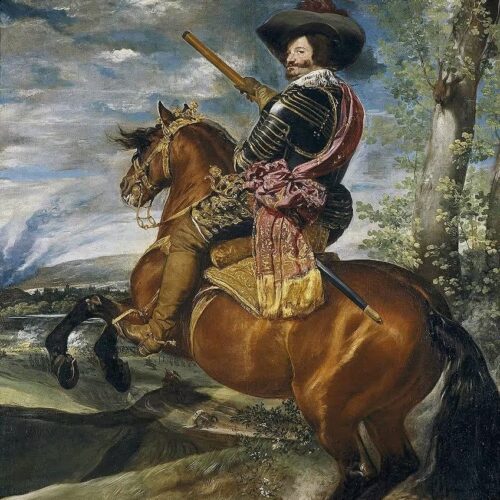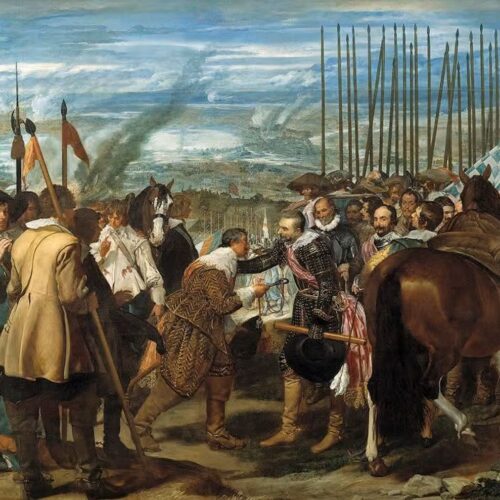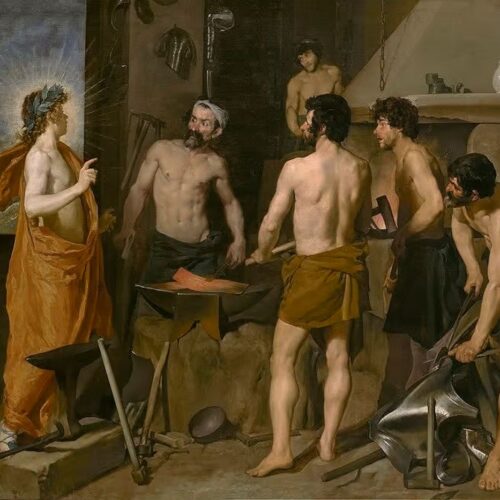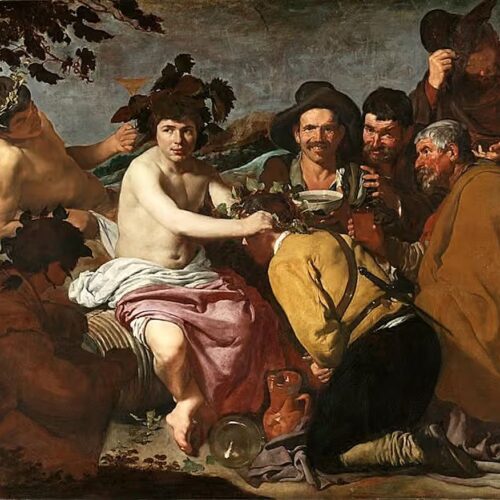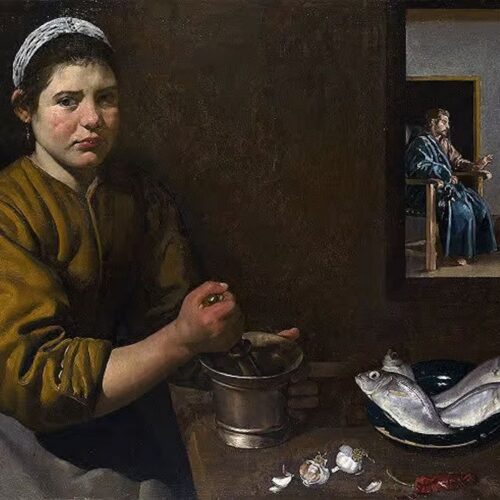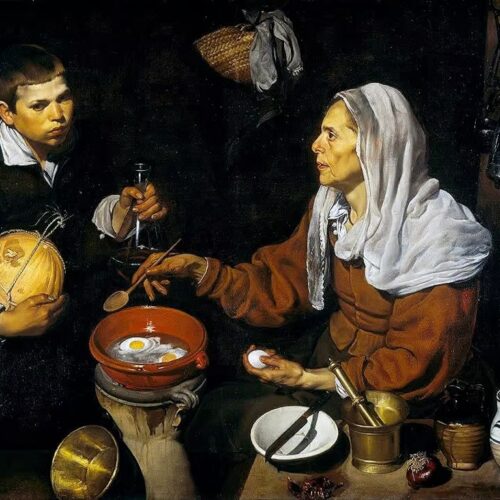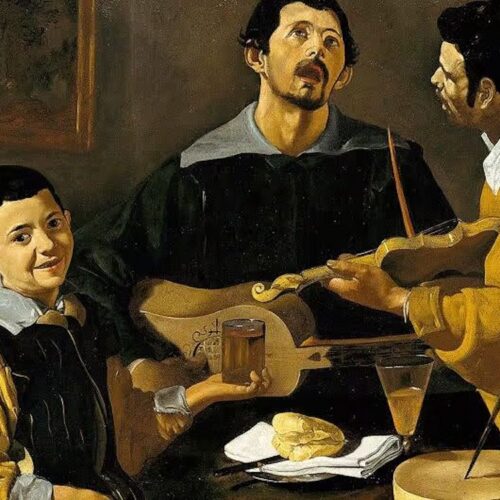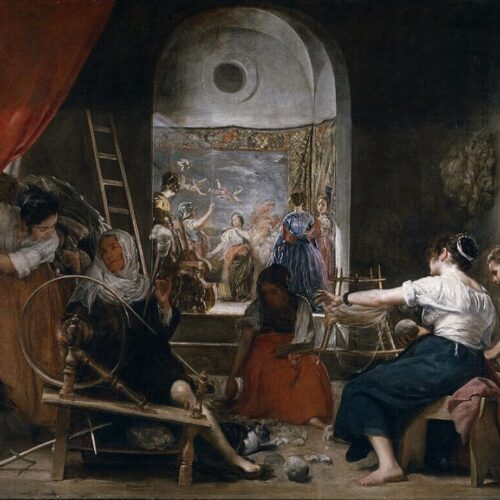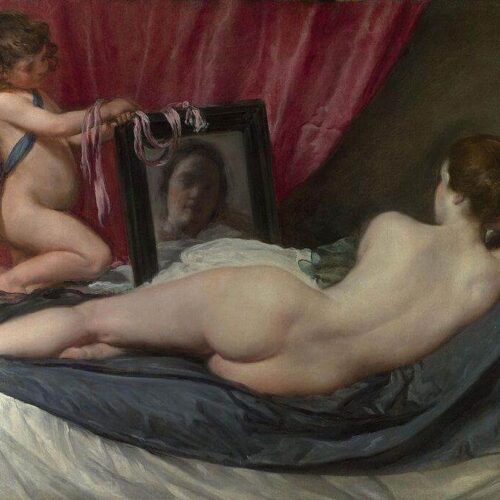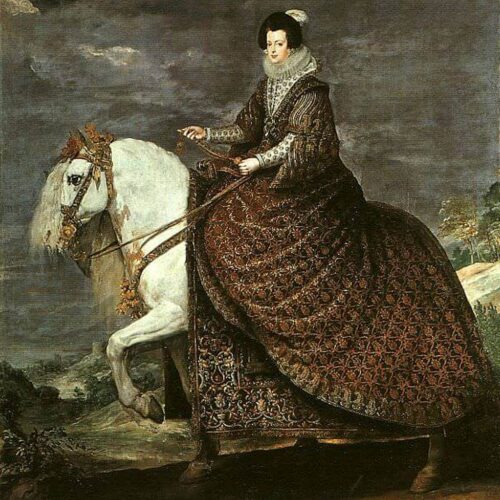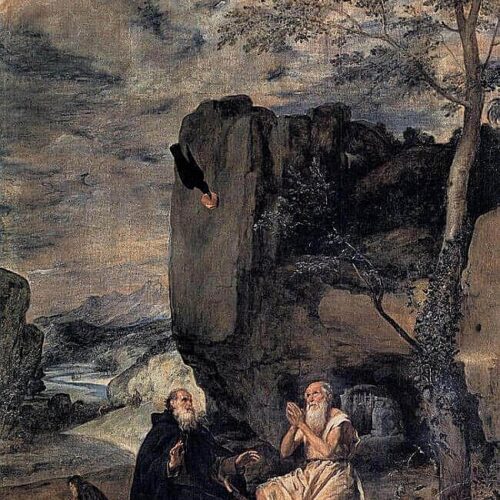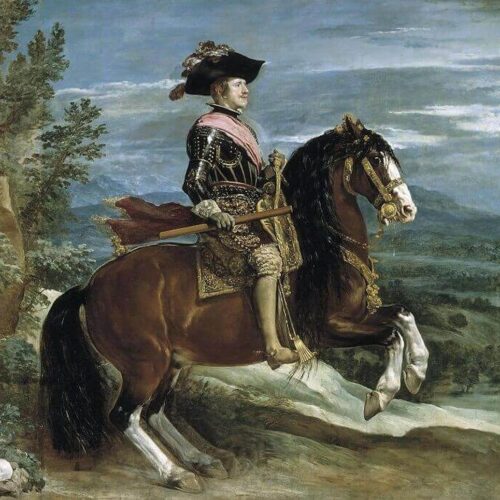| Diego de Velazquez (1599-1660) was among the many artists who visited Rome in the mid-seventeenth century, drawn, like most of the others, by the ruins of antiquity rather than by contemporary Roman art and architecture. He began in a style of solid, almost sculpturesque realism influenced, if only indirectly, by Caravaggio, whose work was then beginning to reach Spain.
Spaniards responded instinctively to such straightforward realism. Miguel de Cervantes (1547-1616) in the prologue to Don Quixote (16o5) significantly used a pictorial metaphor for the ‘plain and simple‘ style of writing he strove for, and Velazquez’s almost exact contemporary, Francisco de Zurbarán (1598-1664), began in the same way. Zurbarán’s pictures of praying monks painted mainly for monasteries in South America as well as Spain – combine to a unique degree down-to-earth actuality with the rapt intensity of Counter-Reformation mysticism. The subsequent development of the art of Velazquez was, however, quite different. In 1623 Velazquez entered the service of the young king Philip IV (1621-65), who took a strong personal liking to him and almost monopolized his production for the rest of his life. The royal collection opened Velazquez’s eyes to the splendour of Venetian art, especially Titian, whose great series of poesie adorned the palace in Madrid. They confirmed Velazquez in his natural predilection for the painterly – and his indifference to Raphael and the more |
